How to make your heating system truly efficient? Reducing the volume of energy will lead to a decrease in financial costs. But at the same time, the heating level of the room will drop, which will affect the comfort of living. Therefore, it is best to make really energy-saving heating at home: boilers, convectors, radiators, batteries with new, high performance.
Fundamentals of the organization of energy-saving heat supply
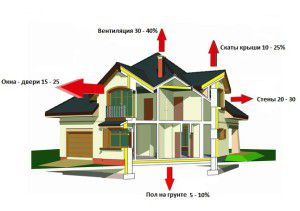
Each heating system has two sides of its work - the cost part and the received heat energy. The ratio of these parameters is the coefficient of performance - efficiency. Ideally, installed energy-efficient solid fuel heating boilers should provide the highest level of efficiency.
What actions are recommended to be taken to create an energy efficient heating system? First of all, it is necessary to reduce the heat losses that occur with insufficient thermal insulation of the building and high energy consumption of pipes and batteries.
In addition, energy-saving heating of a private house must meet the following requirements:
- Low temperature operation... Taking into account the decrease in heat losses of the building, a temperature of up to + 55 ° C will be sufficient to heat a living room;
- Low inertia... Such properties are possessed by an electric energy-saving heating system. The temperature in the house rises much faster than from water heating;
- Mandatory presence of control components - programmers, temperature sensors in the house and on the street. Thus, the heating operation mode will directly depend on external factors and control settings.
It is almost impossible to achieve the desired efficiency with water or air heating. This is due to losses during the passage of the coolant through the pipelines. An alternative to this can be energy-saving heating PLEN, which is part of the electric heat supply.
Before choosing equipment, which may include energy-saving heating boilers and radiators, preliminary calculations of heat losses in the house should be made, and a diagram of the location of heating devices should be developed.
Electric heating of the house

For a long time, the concept of energy-efficient electric heating boilers was at least impossible. The problem was the impossibility of full use of electricity as an energy carrier. Too large losses for heating the heating element were the reason for the low efficiency.
However, this situation has changed over time. New designs have appeared that ensure the high quality of operation of electrical heating devices. A feature of their work is local (zonal) heating.
Film home heating systems
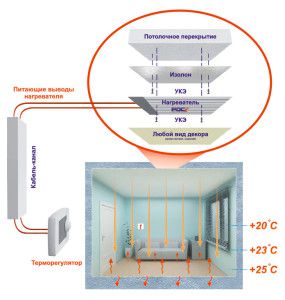
Energy-saving electric heating can be done not only in the traditional way by installing a boiler and pipelines. In this case, heat loss will persist and the efficiency of the system will not improve. New energy-saving heating PLEN and reviews about it speak of high efficiency.
The decoding of the abbreviation PLEN (radiant film electric heater) indicates the application of the principle of heating the surrounding objects using IR heaters. In fact, the main component in this circuit is a thin film on the surface of which resistive heating elements are applied. To protect them from mechanical stress, there is an upper lamination layer.
The peculiarity of the energy-saving heating PLEN is the generation of IR waves up to 10 microns in length. This does not lead to heating of the air in the room, but it causes an increase in the temperature on the surface of objects that have fallen into the zone of influence of the film.
The advantages of using energy-saving heating PLEN can be learned from the reviews and by familiarizing yourself with its technical characteristics. At the same time, the following unique qualities of this system for maintaining a comfortable temperature are distinguished:
- For maximum effect, the heating elements are fixed to the ceiling. This will make it possible to cover a large area in the room;
- The energy-saving heating of a private house must include automatic power control devices that are connected to external and internal temperature sensors;
- The average power of 1 m² of film is from 110 to 180 watts.
Before installing such energy-saving electric heating, it is necessary to insulate the house. The heat transfer resistance of the walls must be at least 3.35 m² * C / W. You also need to make sure that the surface of the film does not overlap with interior items - tall cabinets, etc.
It is imperative to calculate the optimal coverage area of the energy-saving PLEN film. This material must not be cut, so only complete components can be assembled.
Convectors for home heating
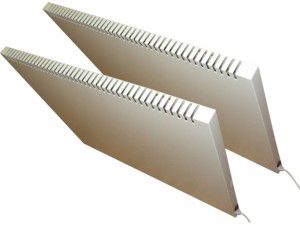
For zonal air heating, it is best to use energy-saving electric heating convectors. They differ from traditional ones in their special housing design and have a number of important additional components.
In conventional oil or electric convectors, air is heated due to the transfer of thermal energy from the surface of the device. However, in this case, the speed of movement of air masses is quite low, which indicates low efficiency. In fact, heating occurs only in a small area of the room. Heating PLEN can be used as an auxiliary one for rapid heating of air in the house.
A modern zonal electric energy-saving heating system consists of separate elements, which are usually located in the places of the highest heat losses in the house - windows and external walls. The main feature lies in their design:
- To improve heat transfer, the casing has a lattice shape with installed fans. Hot air penetrates deep into the room much faster;
- Plates made of aluminum alloy are mounted as a heat exchanger. This material is optimal for the organization of energy-saving heating of a country cottage, since the speed of its heating from the heating element is 2.5 times faster than that of metal;
- A sensitive thermostat must be adopted. Some models are equipped with a programmer.
One of the disadvantages of such devices is the rapid cooling after a power outage. You can read about this in the reviews about energy-saving heating PLEN. But there is an alternative type of construction, which uses a material that is not quite traditional for heating - a melt of quartz sand.
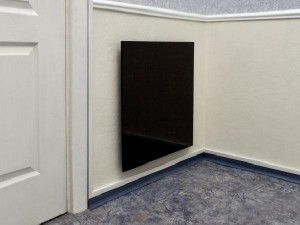
Structurally, this electric energy-saving heating system is no different from traditional convectors. It also has heating elements and a housing that acts as a heat exchanger. However, the difference lies precisely in it, or rather, in the material of its manufacture.The property of a quartz melt is its high energy consumption, i.e. even after turning it off, its surface will radiate heat for some time.
In addition, there are several features of this electric energy saving heating system:
- The temperature on the surface does not exceed + 95 ° С, which does not dry out the air;
- High fire safety of the convector operation;
- Low energy consumption due to efficient heating of the quartz surface. It is about 0.8 kWh.
Unlike the electric heating convectors discussed above, energy-saving quartz heaters operate silently. This is important when arranging heating in a bedroom or children's room.
It should be borne in mind that a heater with a quartz surface will heat the room in only one zone. The final warm-up time can be 20 minutes.
Home heating boilers
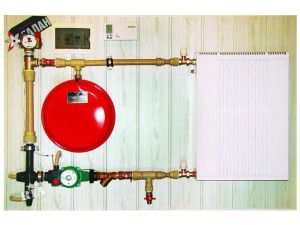
How can you make an energy-saving heating system for hot water heating? To do this, select the appropriate boiler. The defining indicator of its work is efficiency, as well as the type of fuel used.
The main requirement for the operation of this equipment is maximum autonomy and provision of water heating to the required level. Currently, there are several types of gas and energy-saving solid fuel heating boilers. But a special place is occupied by electric models.
Electric boilers for home heating
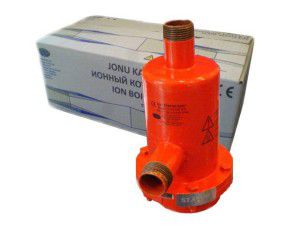
One of the disadvantages of boilers operating on heating elements is the rapid failure of the heating element. Therefore, new types of electric heating boilers have been developed, the energy-saving characteristics of which are an order of magnitude higher than that of traditional ones.
Electrode boiler models have been on the market for more than a year. Their water heating is carried out by creating an electrostatic voltage between the cathode and the anode. In this case, the heat carrier serves as a conductive medium.
The advantages of using electrode electric energy-saving heating boilers:
- Small size;
- Possibility of choosing a model for power. They range from 3 to 50 kW;
- Simple installation.
However, the requirements for the coolant must be taken into account. It should contain the optimal amount of salts to create a reaction in the heating zone. Otherwise, electric boilers will not work efficiently.
It is recommended to use a special composition offered by manufacturers of electrode boilers as a heat carrier.
Solid fuel boilers for home heating
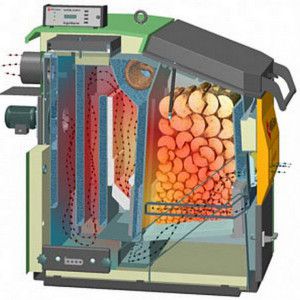
To heat a large area of the house, it is recommended to install pyrolysis energy-saving solid fuel heating boilers. Their principle of operation consists in the slow smoldering of wood or coal, as a result of which gas begins to evolve. It enters the afterburner, where it comes into contact with air currents. This causes it to ignite and generate a lot of heat.
The cost of pyrolysis heating boilers is 60-70% higher than that of traditional ones. However, this is compressed by a significant decrease in fuel consumption during operation. The difference is about 20-25%. They are also ideal for low-temperature heating applications.
What else do you need to consider when planning an energy efficient heating system? Each of the above options can be used in the same heat supply scheme. For primary heating, PLEN heating is ideal. It will work until the water in the pipes heats up from the pyrolysis boiler.
In the video, you can see an example of making a pyrolysis boiler with your own hands.







